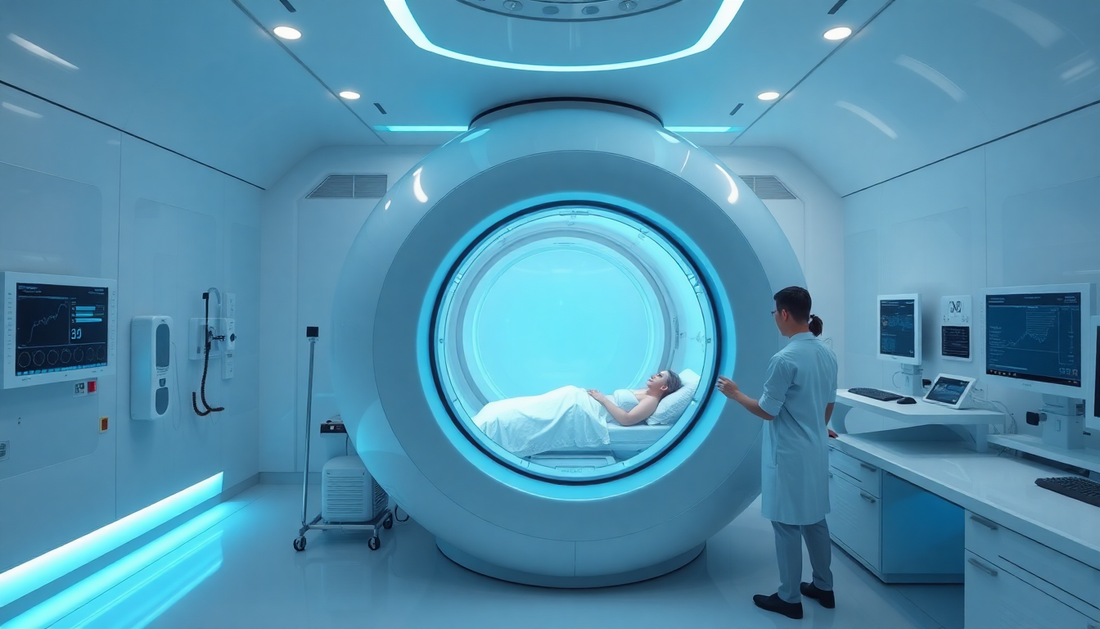
Unlocking the Power of Oxygen: Exploring Hyperbaric Chamber Therapy
Share
In the ever-evolving world of modern medicine, one treatment that has gained significant attention is hyperbaric oxygen therapy (HBOT). This innovative approach to healing and rejuvenation utilizes the power of pure oxygen to promote the body's natural healing processes, offering a range of benefits for individuals seeking to improve their overall health and well-being.
At its core, a hyperbaric chamber is a specialized enclosure that allows patients to breathe pure oxygen under increased atmospheric pressure. This heightened oxygen concentration, combined with the elevated pressure, triggers a cascade of physiological changes that can have profound effects on the body. From accelerating wound healing to enhancing the treatment of certain medical conditions, HBOT has become an increasingly valuable tool in the healthcare arsenal.
The science behind hyperbaric oxygen therapy is both fascinating and complex. When the body is exposed to increased oxygen levels, the blood is able to carry more oxygen, which is then distributed throughout the body's tissues. This enhanced oxygen supply can stimulate the growth of new blood vessels, reduce inflammation, and even help fight off harmful bacteria and infections. Additionally, the increased pressure within the chamber can aid in the absorption of oxygen, further amplifying the therapeutic benefits.
The medical applications of HBOT are wide-ranging, with the treatment being utilized for a variety of conditions. From the acceleration of wound healing in diabetic patients to the management of decompression sickness in divers, hyperbaric oxygen therapy has proven to be a valuable tool in the healthcare industry. It has also shown promise in the treatment of certain neurological disorders, such as traumatic brain injuries and stroke, as well as in the alleviation of symptoms associated with chronic fatigue syndrome and fibromyalgia.
The process of undergoing hyperbaric oxygen therapy is relatively straightforward, yet it requires careful monitoring and supervision by trained medical professionals. Patients are typically placed inside a pressurized chamber, where they breathe pure oxygen for a predetermined duration, often ranging from 30 minutes to several hours, depending on the specific treatment plan. During the session, patients may experience a slight pressure sensation in their ears, similar to that felt during air travel, but this is generally well-tolerated and quickly resolved.
As with any medical treatment, it is essential to consider the potential risks and safety precautions associated with hyperbaric oxygen therapy. While the procedure is generally considered safe when administered by qualified healthcare providers, there are certain contraindications and potential side effects that must be taken into account. Patients with certain respiratory conditions, for example, may not be suitable candidates for HBOT, and proper screening and monitoring are crucial to ensure the safety and efficacy of the treatment.
In conclusion, the power of hyperbaric oxygen therapy lies in its ability to harness the restorative properties of pure oxygen and elevated pressure to promote healing, reduce inflammation, and address a wide range of medical conditions. As research continues to uncover the full potential of this innovative treatment, it is likely that we will see an increasing number of individuals turning to HBOT as a means of improving their overall health and well-being. By understanding the science behind this remarkable therapy, we can unlock the door to a future where the healing power of oxygen is harnessed to its fullest potential.
The Basics of Hyperbaric Chambers
A hyperbaric chamber is a specialized enclosure that allows patients to breathe pure oxygen under increased atmospheric pressure. This heightened oxygen concentration, combined with the elevated pressure, triggers a cascade of physiological changes that can have profound effects on the body.
Types of Hyperbaric Chambers
There are two main types of hyperbaric chambers: monoplace and multiplace. Monoplace chambers are designed to accommodate a single patient, while multiplace chambers can accommodate multiple individuals at once, allowing for more efficient treatment of larger groups.
The Science Behind Oxygen Therapy
The increased oxygen levels and pressure within a hyperbaric chamber work together to enhance the body's natural healing processes. When the body is exposed to increased oxygen levels, the blood is able to carry more oxygen, which is then distributed throughout the body's tissues. This enhanced oxygen supply can stimulate the growth of new blood vessels, reduce inflammation, and even help fight off harmful bacteria and infections.
The Benefits of Increased Oxygen Pressure
The increased pressure within the chamber also plays a crucial role in the therapeutic benefits of HBOT. The elevated pressure aids in the absorption of oxygen, further amplifying the positive effects on the body's tissues and systems.
Medical Applications of Hyperbaric Oxygen Therapy
HBOT has a wide range of medical applications, from the acceleration of wound healing in diabetic patients to the management of decompression sickness in divers. The treatment has also shown promise in the alleviation of symptoms associated with certain neurological disorders, chronic fatigue syndrome, and fibromyalgia.
Common Conditions Treated with HBOT
Some of the most common conditions treated with hyperbaric oxygen therapy include:
- Diabetic wounds and ulcers
- Decompression sickness
- Carbon monoxide poisoning
- Radiation-induced injuries
- Certain types of infections
The Hyperbaric Oxygen Therapy Process
The process of undergoing hyperbaric oxygen therapy is relatively straightforward, yet it requires careful monitoring and supervision by trained medical professionals. Patients are typically placed inside a pressurized chamber, where they breathe pure oxygen for a predetermined duration, often ranging from 30 minutes to several hours, depending on the specific treatment plan.
Safety Considerations
While HBOT is generally considered safe when administered by qualified healthcare providers, there are certain contraindications and potential side effects that must be taken into account. Proper screening and monitoring are crucial to ensure the safety and efficacy of the treatment.
Conclusion
The power of hyperbaric oxygen therapy lies in its ability to harness the restorative properties of pure oxygen and elevated pressure to promote healing, reduce inflammation, and address a wide range of medical conditions. As research continues to uncover the full potential of this innovative treatment, it is likely that we will see an increasing number of individuals turning to HBOT as a means of improving their overall health and well-being.
